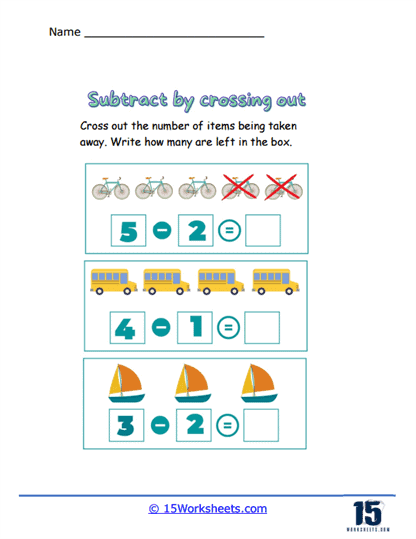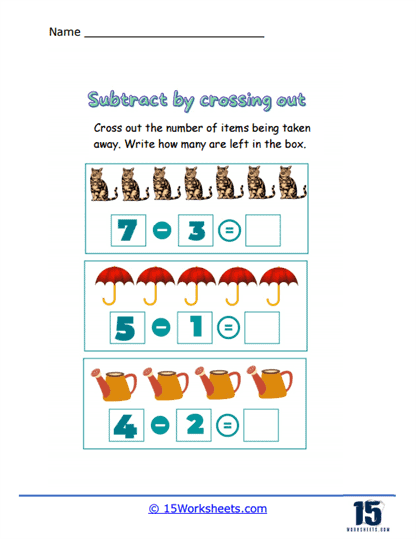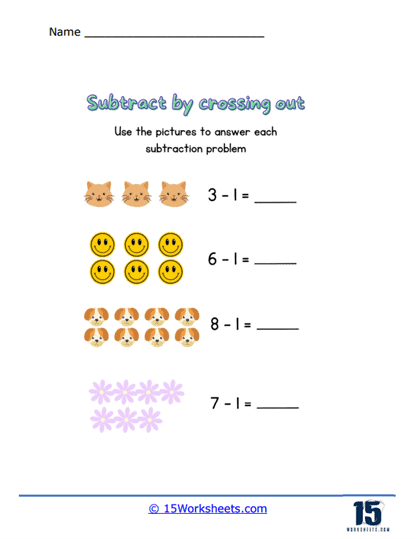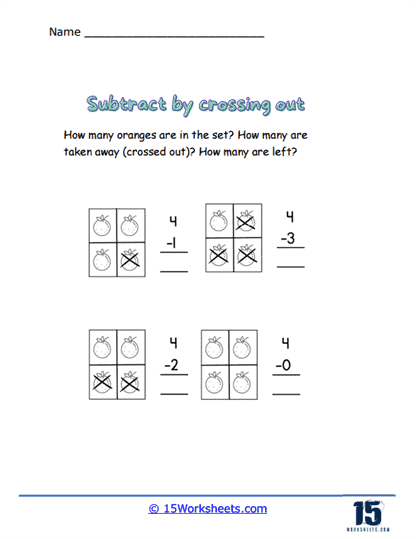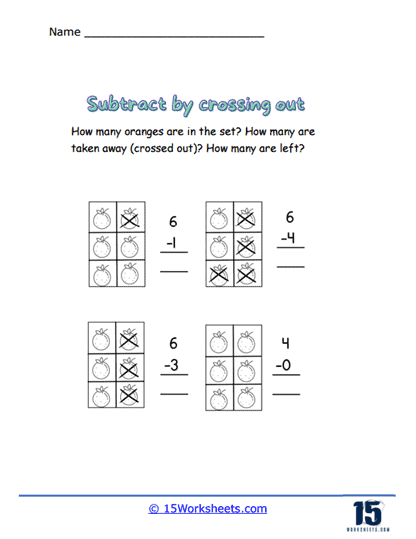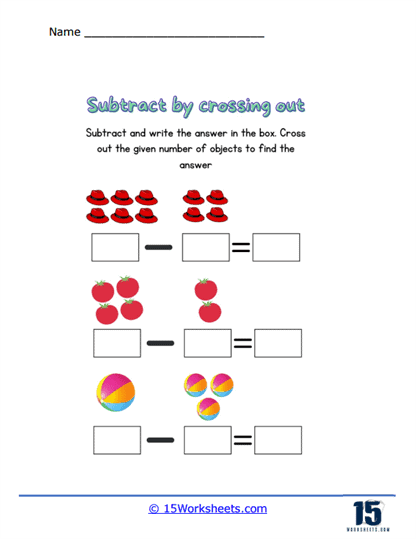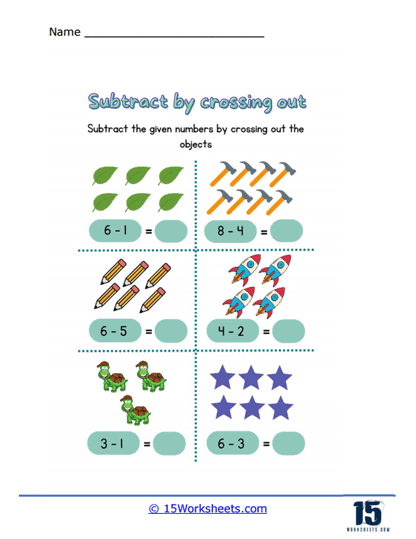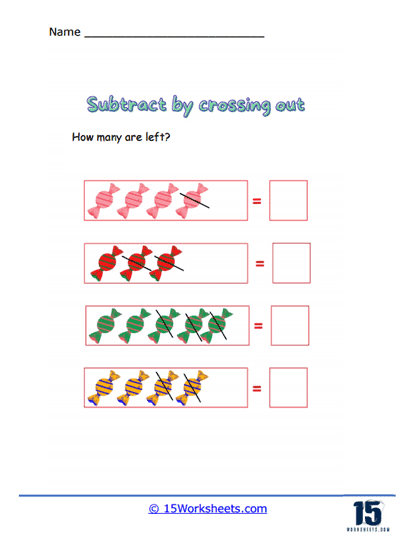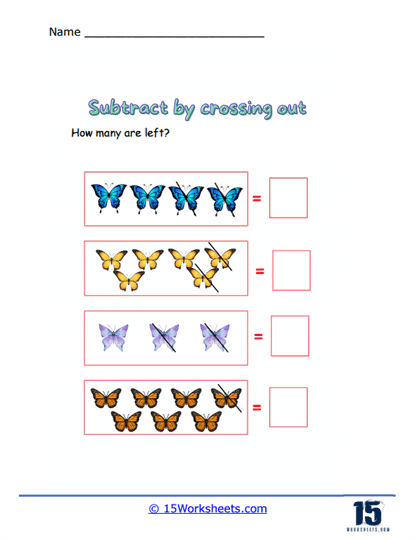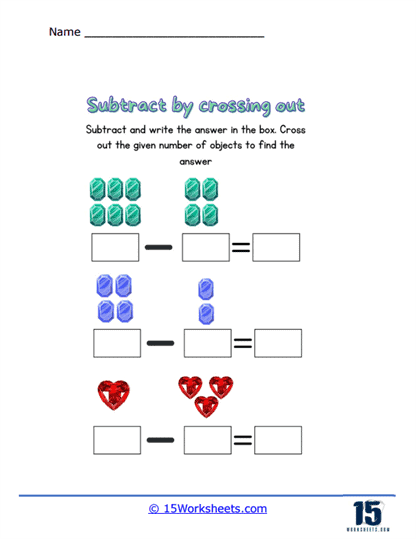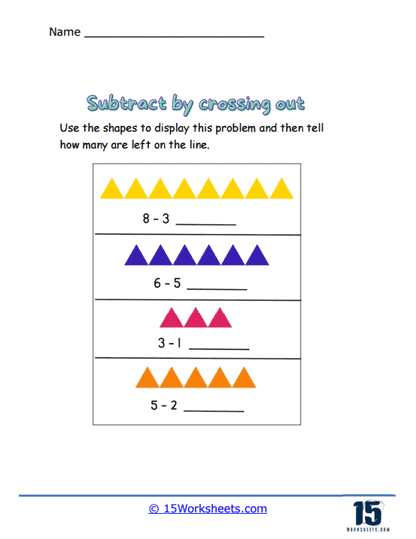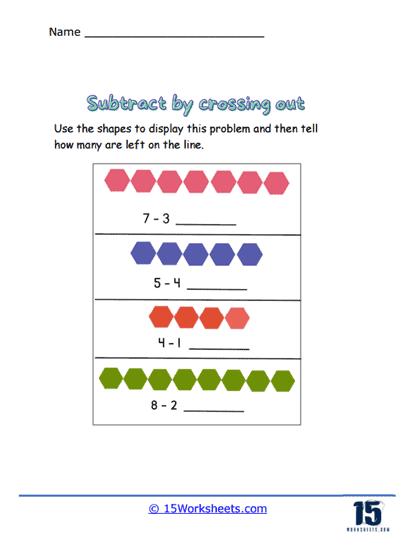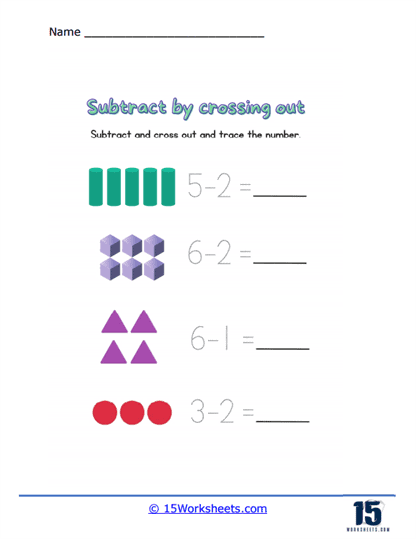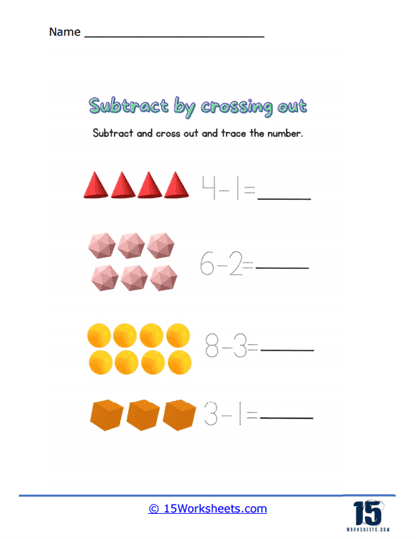Subtract By Crossing Out Worksheets
About These 15 Worksheets
Subtract By Crossing Out Worksheets are practical, engaging tools used in teaching elementary-aged children the basic concept of subtraction. As the name suggests, these worksheets involve a visual method of subtraction where objects are crossed out to denote subtraction. The approach, part of a larger group of strategies called visual or concrete manipulatives, makes the concept of subtraction concrete and understandable for young children.
From the start, children learning arithmetic are introduced to the concept of numbers through physical objects like counters, blocks, or fingers. They understand, for example, that the concept of ‘two’ corresponds to two physical objects. Similarly, when introducing the concept of subtraction, it is beneficial to use concrete objects. However, it’s not always practical to use physical objects, especially in a classroom setting or when dealing with larger numbers.
These worksheets involve pictures or symbols representing a certain number of items. For instance, a worksheet may have a picture of ten apples and instruct the child to subtract four. The child would then cross out four apples, count the remaining ones, and arrive at the answer ‘six’. This way, children can visually see what it means to subtract, connecting the abstract numerical operation with a concrete action.
The worksheets vary in complexity depending on the grade level and the child’s proficiency. For younger children or beginners, worksheets might involve smaller numbers and simple, single-digit subtractions. As children become more comfortable with the concept, worksheets can involve two-digit numbers, more objects, or more complex instructions such as subtracting multiple numbers in one problem.
They also offer opportunities for children to practice other skills, such as fine motor skills when they cross out objects, and counting skills when they count the remaining objects. It can also introduce the concept of ‘zero’ in a concrete way, by showing that crossing out all objects leaves none behind.
However, these worksheets are not without their limitations. Crossing out only works for subtraction problems where the subtrahend (the number being subtracted) is less than the minuend (the number from which another is being subtracted). It also becomes less practical as numbers get larger. That’s why this method is generally used in early elementary grades as a stepping stone to understanding subtraction. As children get older and their math skills improve, they will be introduced to more abstract methods of subtraction, such as using number lines, or regrouping in column subtraction.
Teachers might start a lesson with a hands-on activity, using physical objects for subtraction, then transition into the worksheets as a bridge towards abstract representations of the operation. Then they can move on to more abstract subtraction problems, using only numbers. It’s important to note that while the worksheets are an effective teaching tool, they should be used as part of a balanced approach that includes a variety of strategies and activities. Children learn in different ways, and what works best for one child might not work as well for another. Some children might benefit more from a physical demonstration, while others might prefer a more abstract approach.
How Are Images Helpful For Understanding Subtraction
Learning subtraction with images is beneficial for several reasons, particularly for younger children who are just beginning to grasp mathematical concepts. Using images provides a visual, concrete representation of abstract numerical concepts, helping to solidify these concepts in a child’s mind. Here are some of the key benefits of this learning approach:
Makes Abstract Concepts Concrete – Subtraction is essentially an abstract concept. The idea of “taking away” from a group is not always easy for a child to understand using numbers alone. Images, however, can provide a concrete, tangible representation of this process. For instance, starting with five apples and taking two away clearly shows what it means to subtract.
Aids Understanding – Images can aid a child’s comprehension of mathematical concepts. The act of visually seeing a number of objects reduced helps to underline what subtraction actually is. This can make the process of learning subtraction less confusing and intimidating for children.
Promotes Engagement – Children tend to be more engaged with learning materials that include images. The use of brightly colored, interesting images can make the learning process more enjoyable and less like traditional “school work”. This increased engagement can lead to a more positive attitude towards learning and better retention of the concept.
Enhances Memory – Visual aids are known to enhance memory retention. When a child uses images to learn subtraction, they’re more likely to remember the concept because they have a visual memory to associate with it. This makes recall easier when they encounter subtraction problems in the future.
Builds a Foundation for More Complex Math – Learning subtraction with images lays a strong foundation for understanding more complex mathematical concepts in the future. Once a child grasps the concept of subtraction with the help of images, they can more easily understand how subtraction fits into the broader mathematical operations, such as multiplication and division.
Facilitates Problem-solving Skills – When children use images to subtract, they’re not just memorizing facts; they’re solving problems. They have to figure out how many items to take away and how many are left. This develops their problem-solving skills, which are crucial in all areas of learning.
Differentiates Learning – Every child has a unique learning style. Some children are visual learners, meaning they understand and remember things by sight. Using images to teach subtraction caters to these visual learners and can help them grasp concepts more effectively.

